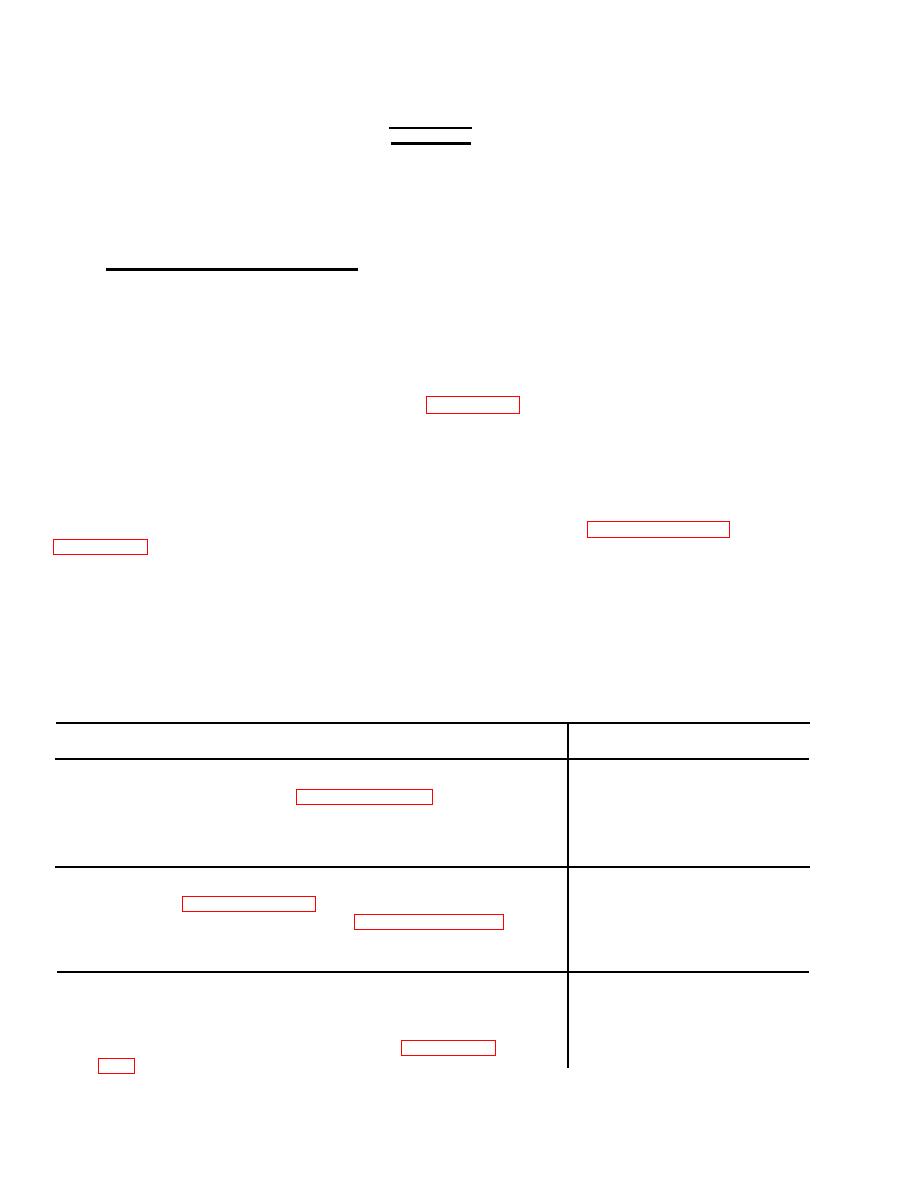 |
|||
|
|
|||
|
|
|||
| ||||||||||
|
|  TM 11-5820-918-13
WARNING
In the performance of some maintenance procedures, it is necessary to
have the equipment energized and dust covers removed. Extreme care
must be exercised in making internal measurements or adjustments since
potentially lethal voltages are present.
CORRECTIVE
MAINTENANCE
5-8. The corrective maintenance data provided in this section consists of trouble-
shooting procedures and adjustment procedures. Parts requiring removal during rel-
evant adjustment operations are described and illustrated as necessary. The recom-
mended maintenance approach for the TCS-4B transmitter is repair by replacement
of assemblies. Faulty assemblies are returned to the depot for repair to a part level.
troubleshooting the transmitter. The table is not intended to be all inclusive but
rather to provide indications of what unit or assembly is defective. One approach
to fault isolation is to derive all possible information from the function or malfunction
of operating controls and indicators and then, through systematic analysis of test
and measurement data, along with the troubleshooting guides, localize a fault to a
module or assembly. The malfunction is verified and corrected by replacing the faulty
assembly with a known good assembly. The performance test, paragraph 5-20, plus
used for fault isolation.
NOTE
In order to perform troubleshooting and adjustment procedures, individual
units must be removed from rack, and top access cover must be withdrawn,
being careful to first disconnect interconnecting cables.
Preventive Maintenance Schedule
Procedure
Schedule
At installation and /or
1. Check frequency standard and adjust if necessary
per procedure given in paragraph 5-15,
after equipment has
been moved; there-
after as needed to
correct for drift.
2.
Check battery condition by performing self-test
At beginning of each
(refer to paragraph 3-7, step p); if necessary
shift
change batteries according to paragraph 2-17.
The primary AC power should be on when
performing this test.
3.
Check antenna RF output power efficiencies by
At beginning and end
switching power output FWD/REFL switch from
of each shift.
FWD to REFL . Note meter readings for diplexed
and non-diplexed modes. Refer to paragraph
3-8, step c.
|
|
Privacy Statement - Press Release - Copyright Information. - Contact Us |